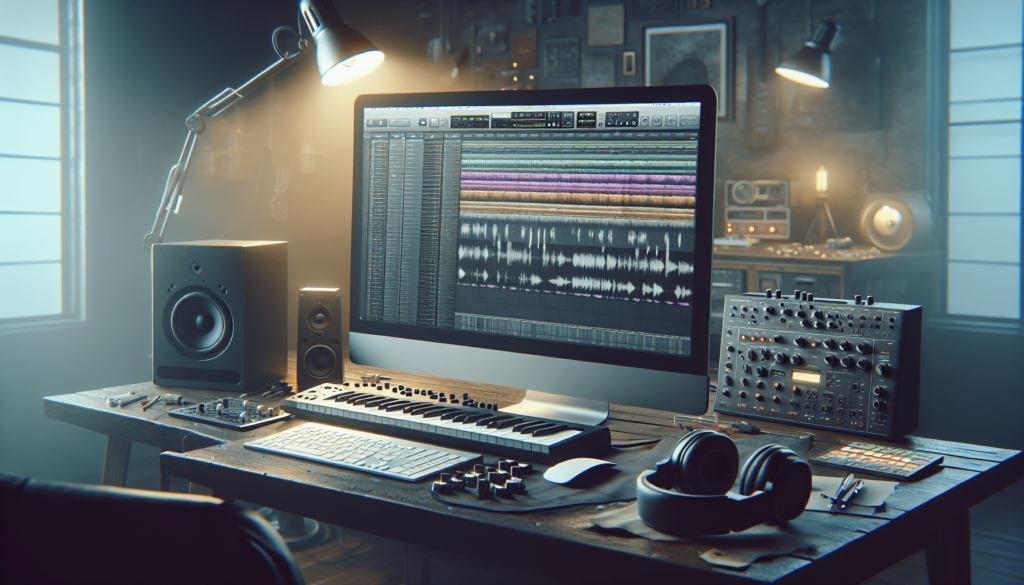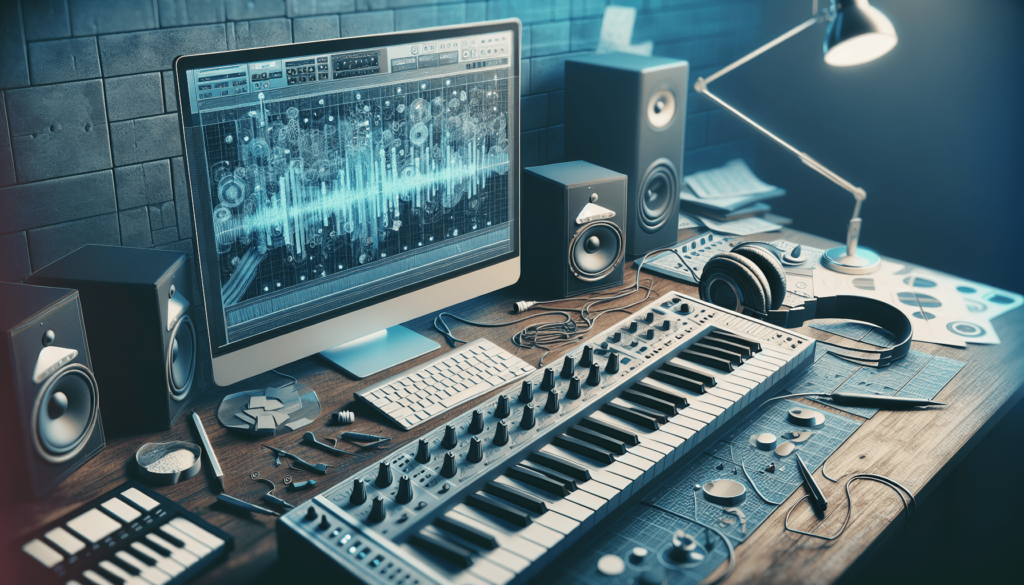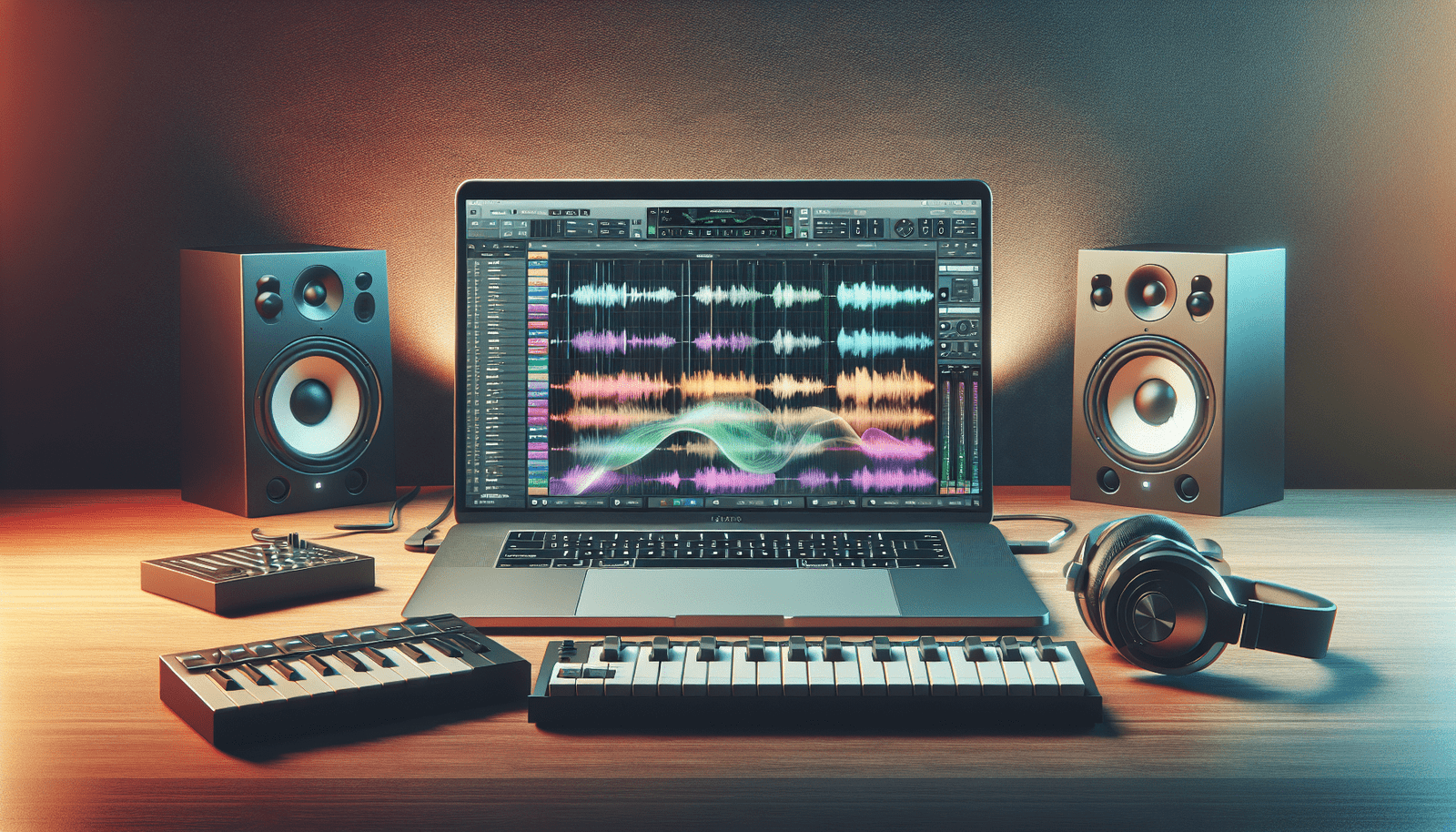Have you ever wondered how your favorite songs are created? What tools do musicians and producers use to bring their ideas to life? One of the key components in modern music production is a Digital Audio Workstation (DAW). Understanding what a DAW is and its importance can significantly enhance your appreciation of music creation.
What is a DAW?
A Digital Audio Workstation (DAW) is software that allows you to record, edit, mix, and produce audio files. Unlike traditional recording studios filled with complex equipment, a DAW provides a more user-friendly interface right at your fingertips.
Key Features of a DAW
Each DAW comes with several essential features that facilitate the music production process. Here are a few key aspects you might find interesting:
| Feature | Description |
|---|---|
| Recording | Captures live audio from instruments or vocals. |
| Editing | Allows you to modify tracks, including cutting, copying, and pasting. |
| Mixing | Combines multiple audio tracks into one cohesive piece. |
| MIDI Support | Lets you use MIDI (Musical Instrument Digital Interface) to control virtual instruments. |
| Plugins/FX | Supports additional effects and virtual instruments to enhance creativity. |
With these features, you can transform your musical ideas into fully polished compositions.
The Evolution of Music Production
To appreciate the significance of DAWs, it’s worth taking a brief look at how music production has evolved over the years.
Traditional Recording Techniques
In the past, producing music was a labor-intensive process that required extensive knowledge of sound engineering. There were large mixing consoles, reel-to-reel tape machines, and various microphones in studios. Artists and producers had to collaborate with engineers who understood the intricacies of this bulky setup.
The Rise of Digital Technology
As technology advanced, the introduction of computers revolutionized music production. The transition from analog to digital allowed for more accessible editing tools and the ability to easily manipulate audio without quality loss. These changes laid the groundwork for the widespread popularity of DAWs.
How DAWs Changed Music Production
DAWs democratized music creation. Now, anyone with a computer and the right software can create professional-sounding music from their home. This shift has led to an explosion of creativity, enabling more artists to share their work with the world.

Choosing the Right DAW for You
With numerous options available, selecting the right DAW can be overwhelming. Here are some factors to consider when choosing the ideal software for your needs.
Your Level of Experience
Your experience level plays a crucial role in determining which DAW is best. If you’re a beginner, you might want to start with a more user-friendly option that won’t overwhelm you. Conversely, if you’re an experienced producer, you might seek a more complex DAW with advanced features.
Type of Music You Want to Create
Different DAWs excel in different genres. Some are better suited for electronic music, while others fit rock or orchestral compositions. Consider your musical preference when choosing a DAW.
Budget Considerations
DAWs come in a range of prices—from free versions to expensive professional software. It’s essential to set a budget and find a DAW that offers the features you need without breaking the bank.
Compatibility and System Requirements
Before committing to a DAW, check its compatibility with your computer’s operating system. Some DAWs may require higher specifications than others, affecting your overall experience in music production.
Popular DAWs on the Market
Each DAW has its unique strengths and features that cater to different types of users. Here are some of the most popular ones you might consider:
| DAW Name | Best For | Price Range |
|---|---|---|
| Ableton Live | Electronic music production | $99 – $749 |
| Logic Pro X | Mac users, comprehensive production | $199 |
| FL Studio | Beginners and electronic music | $99 – $499 |
| Pro Tools | Professional studios and audio editing | $29/month or $599 |
| Cubase | Comprehensive MIDI editing | $99 – $579 |
Each DAW has a trial version available, allowing you to test it out before making a purchase.

Essential Techniques in Using a DAW
Once you choose a DAW, there are fundamental techniques you’ll want to master. Understanding these will significantly improve your production skills and provide you with more control over your music projects.
Recording Audio
Knowing how to record audio properly is crucial. Make sure you have a decent microphone and an audio interface for the best sound quality. Understand the signal flow: sound goes from the microphone to the audio interface, then into your DAW. Familiarize yourself with the recording settings in your DAW to ensure you capture the best possible sound.
MIDI Programming
MIDI allows you to create music without recording actual audio. You can program notes, adjust their timing, and control virtual instruments. Take the time to learn about MIDI quantization, which aligns the notes to a specific grid to tighten up the performance.
Editing Techniques
Editing is where you refine your tracks. Familiarize yourself with the basic editing tools in your DAW, such as cutting, fading, and volume automation. Don’t hesitate to experiment—sometimes, imperfections can lead to unique sounds.
Mixing and Mastering
Mixing involves combining your tracks, adjusting their levels, panning them in the stereo field, and applying effects. Mastering is the final step, ensuring your track sounds polished. While these processes can be intricate, there are many resources available to help you learn.
Using Plugins and Effects
Plugins are essential tools that expand the capabilities of your DAW. They can emulate instruments or apply audio effects such as reverb, delay, and compression. Understanding how to effectively use plugins will broaden your sound palette and enhance your productions.
The Importance of a DAW in Music Production
So, why is a DAW so important in music production? Here are some of the most compelling reasons:
Enhanced Creativity
With a DAW, the boundaries of your musical creativity are virtually limitless. You can experiment with sound design, layer tracks, and easily arrange compositions without the constraints of traditional studio setups. This flexibility fosters artistic exploration.
Streamlined Workflow
DAWs often come with templates that can speed up your workflow. You can quickly set up a new project, select your instruments, and organize your tracks. This efficiency allows you to focus more on the creative process than the technical aspects.
Collaboration Opportunities
Many DAWs facilitate collaboration. You can share your project files with other artists or producers, enabling others to contribute. Some DAWs even offer cloud-based options to work on projects in real time, further enhancing the collaborative aspect of music production.
Learning and Growth
In addition to being a tool for creation, a DAW is an excellent resource for learning. Many offer tutorials, forums, and communities where you can connect with other users for support and inspiration. As you explore your DAW, you’ll learn valuable skills that will serve you well throughout your music career.
The Future of DAWs and Music Production
The landscape of music production is continually evolving, and DAWs are at the forefront of this change. Here are some trends to keep an eye on:
Advanced Artificial Intelligence (AI)
AI is making its way into music production. Some DAWs are now incorporating AI features that analyze your music and suggest chord progressions, melodies, or even complete tracks. This technology can greatly enhance your creative process, offering new ideas you may not have considered.
Enhanced Remote Collaboration
As remote work becomes more common, so does the need for collaborative tools. Future DAWs may have more robust options for real-time collaboration, allowing musicians from around the world to work together seamlessly.
Integration with Hardware
Hardware instruments and controllers are increasingly being incorporated into DAW workflows. Expect to see further advancements in integrating these tools, allowing for more tactile and hands-on music production experiences.
Conclusion: Your Journey with a DAW
Understanding what a DAW is and its significance in music production is just the first step. As you embark on your music-making journey, embrace the learning process and don’t shy away from experimentation. With the right DAW in hand, you’re equipped to unleash your creativity and share your musical vision with the world.
So, what are you waiting for? Start exploring the possibilities a DAW has to offer and take your music production skills to the next level. Enjoy the process!



